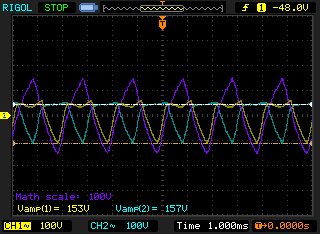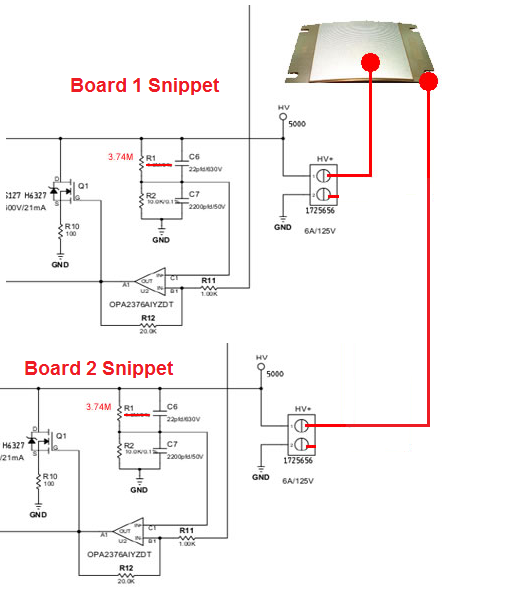Hello,
We made a board based on Brian Burk's DRV2700 Reference Design design:
"DRV2700EVM-HV Reference Design - 2014-06-19.pdf"
Our board + BOM matches the DRV2700 Reference Design design exactly. The board works; however...
We want to get 400V AC output (+/-200V). Is it possible with the existing circuit ?
If not, what can we change to accomplish this ?
Thank you !





